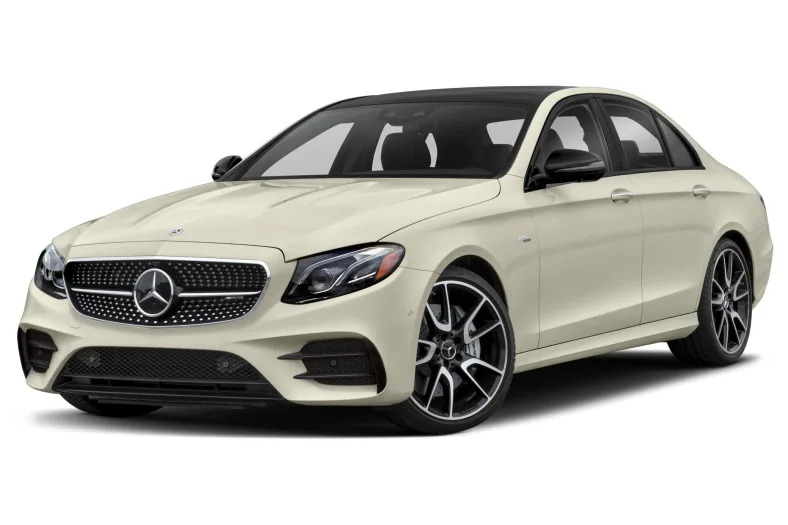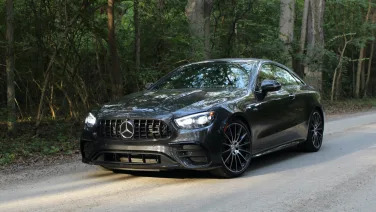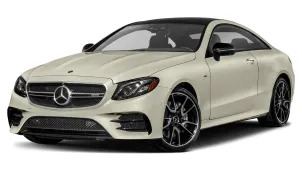2019 Mercedes-Benz AMG E 53
NAPA VALLEY, Calif. — In the past, the AMG formula was simple: Stick a big, powerful engine under the hood, sharpen the steering and suspension, and warm over the styling with some big wheels and subtle trim. They were comfortable and blazingly quick, but perhaps not the best-handling vehicles in their class — think muscle car by way of Germany. A trip to Northern California with the 2019 Mercedes-AMG E 53 sedan, coupe and cabriolet shows that although things have changed quite a bit since Daimler took control of AMG in 1999, at least one thing remains very much the same: most AMGs are powered by one sweetheart of an engine. And there are more AMGs than ever, with 47 different variants in the U.S. — nearly every model variant in the Mercedes-Benz lineup has at least one AMG trim. It's all a bit confusing, to be honest. That said, in the E-Class lineup, there's a massive gulf in both price and performance between the burliest non-AMG E 450 at roughly $60,000 and the top dog E 63 S that's over $100,000. And that's where the E 53 fits in, much less expensive and hard edged than the E 63 S but offering a novel powertrain and other upgrades over the more pedestrian E 450. In the E 53, the engine (codenamed M256) is a turbocharged inline-six paired with a 48-volt mild-hybrid system, that comes in two flavors in the U.S. — a 362 horsepower variants for cars like the CLS 450, and a 429 hp and 384 pound-feet of torque variant found in the E 53 triplets. The gasoline engine isn't hand-built like the twin-turbo 4.0-liter in the AMG 63s, but it's a technological wonder — and a finalist for our 2019 Technology of the Year award. This silky-smooth straight-six's party trick is how it uses the hybrid system to improve performance and efficiency, both on paper and in the real world. The key piece of tech here is the integrated starter — EQ Boost in Mercedes-speak — resting between the engine and the nine-speed automatic transmission and is the main component in the 48-volt system. In AMG 53 models, it powers an auxiliary electric compressor — basically an electric turbocharger — that feeds into a traditional twin-scroll turbo. The EQ Boost system can provide 21 horsepower and 184 pound-feet of torque for short periods, almost completely eliminating turbo lag as the compressor doesn't rely on the exhaust to build boost. While other cars use electricity to boost performance — the Acura NSX being a good example — most channel it through one or more electric motors. The Mercedes system is relatively novel, and admittedly rather complex. From behind the wheel that complexity doesn't really matter much, since nailing the throttle provides the smooth, seamless response of a naturally-aspirated engine. It's quick — 0 to 60 mph in 4.4 seconds in the sedan and cabriolet, 4.3 in the coupe — but not shockingly so. The hills and curving roads …
Full Review
NAPA VALLEY, Calif. — In the past, the AMG formula was simple: Stick a big, powerful engine under the hood, sharpen the steering and suspension, and warm over the styling with some big wheels and subtle trim. They were comfortable and blazingly quick, but perhaps not the best-handling vehicles in their class — think muscle car by way of Germany. A trip to Northern California with the 2019 Mercedes-AMG E 53 sedan, coupe and cabriolet shows that although things have changed quite a bit since Daimler took control of AMG in 1999, at least one thing remains very much the same: most AMGs are powered by one sweetheart of an engine. And there are more AMGs than ever, with 47 different variants in the U.S. — nearly every model variant in the Mercedes-Benz lineup has at least one AMG trim. It's all a bit confusing, to be honest. That said, in the E-Class lineup, there's a massive gulf in both price and performance between the burliest non-AMG E 450 at roughly $60,000 and the top dog E 63 S that's over $100,000. And that's where the E 53 fits in, much less expensive and hard edged than the E 63 S but offering a novel powertrain and other upgrades over the more pedestrian E 450. In the E 53, the engine (codenamed M256) is a turbocharged inline-six paired with a 48-volt mild-hybrid system, that comes in two flavors in the U.S. — a 362 horsepower variants for cars like the CLS 450, and a 429 hp and 384 pound-feet of torque variant found in the E 53 triplets. The gasoline engine isn't hand-built like the twin-turbo 4.0-liter in the AMG 63s, but it's a technological wonder — and a finalist for our 2019 Technology of the Year award. This silky-smooth straight-six's party trick is how it uses the hybrid system to improve performance and efficiency, both on paper and in the real world. The key piece of tech here is the integrated starter — EQ Boost in Mercedes-speak — resting between the engine and the nine-speed automatic transmission and is the main component in the 48-volt system. In AMG 53 models, it powers an auxiliary electric compressor — basically an electric turbocharger — that feeds into a traditional twin-scroll turbo. The EQ Boost system can provide 21 horsepower and 184 pound-feet of torque for short periods, almost completely eliminating turbo lag as the compressor doesn't rely on the exhaust to build boost. While other cars use electricity to boost performance — the Acura NSX being a good example — most channel it through one or more electric motors. The Mercedes system is relatively novel, and admittedly rather complex. From behind the wheel that complexity doesn't really matter much, since nailing the throttle provides the smooth, seamless response of a naturally-aspirated engine. It's quick — 0 to 60 mph in 4.4 seconds in the sedan and cabriolet, 4.3 in the coupe — but not shockingly so. The hills and curving roads …
Hide Full Review
Hide Full Review
Retail Price
$72,550 - $80,350
MSRP / Window Sticker Price
| Engine | I-6 |
| MPG | Up to 21 city / 28 highway |
| Seating | 5 Passengers |
| Transmission | 9-spd w/OD |
| Power | 429 @ 6100 rpm |
| Drivetrain | AMG Performance 4MATIC+ all wheel |
| Curb Weight | 0 - 4,341 lbs |
Smart Buy Program is powered by 







